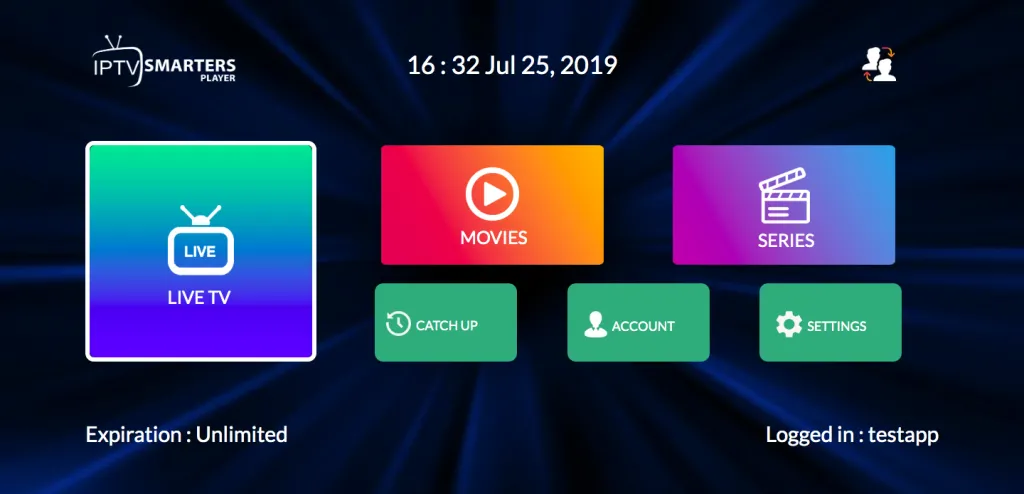
We recently compiled a report on the 20 Best Alternatives to Cable TV and in this article we will look at the top alternative.
Cord-Cutters in the US
Today, the US entertainment industry is composed of a wide variety of platforms, which means that consumers are always in search of a better alternative to what they currently subscribe to. Due to a rise in cable prices, along with an increase in the number of available streaming services, more and more Americans are unsubscribing from their cable plans.
According to data by the Pew Research Center (PRC), 76% of US adults had a cable or satellite TV subscription in 2015. However, there has been a massive decline in the years since. According to the 2022 State of Viewership report by Samba TV, only 48% of US adults had a cable or satellite TV subscription in 2022. In 2021, PRC also reported that of the individuals who do not have cable access, 71% say that they can access their desired content online, whereas 69% say that the cost of cable TV is too high.
Unsubscriptions due to rising prices have also impacted paid streaming services. On June 13, 2024, Forbes reported that 45% of Americans have canceled at least one streaming service in the past year because of high costs. Despite that, 99% of US households still pay for at least one streaming service. This dichotomy exists because the streaming industry allows individuals to choose from multiple options and retain whichever they find most beneficial.
According to Yahoo Tech, the average cable TV package in the US costs $83 a month, whereas an average user pays $77 a month, in total, for various streaming services. Comparingly, Forbes places the average monthly streaming cost at $46. Moreover, households that subscribe to only one or two streaming services can pay as little as $25 a month. In a nutshell, the streaming industry allows users much more control over their viewing choices, as they can subscribe and unsubscribe as per their budgets.
Snapshot of the American TV Industry
As entertainment sources grow, the American public is pretty divided on how they prefer consuming their content. Nielsen, a data management firm, puts out The Gauge every month, which is a monthly report on consumption across cable, broadcasting, and streaming. According to the June 2024 report, published on July 16, streaming held the highest share in the TV industry at 40.3%. The second spot was held by cable, at 27.2%, whereas broadcast TV’s share was worth 20.5%. The remaining 12% was held by ‘other sources’, which includes all other forms of content viewing, including DVD playback and unmeasured video-on-demand.
According to the report, streaming topped the previous single category share record, which was set by cable for 40.1% in June 2021. Streaming also exhibited the most growth across all categories, growing 1.5 percentage points in a month. Compared to June 2023, streaming’s share of the industry grew by 2.6 percentage points year-on-year. The top streaming platform was YouTube, with a 9.9% share in the entire TV industry. The second most-streamed platform was Netflix, with an 8.4% share of the industry. Netflix was also home to the most-watched streaming title in June 2024: Bridgerton. The show’s third season was released on May 16 and in June, the show managed to gain 9.3 billion minutes of streaming on Netflix.
On the other hand, cable share in June 2023 stood at 30.6%, falling 3.4 percentage points till June 2024. Going further back, cable had a market share of 35.1% in June 2022, falling 4.5 percentage points till June 2023. These trends showcase a steady and consistent decrease in cable viewership, as the number of cord-cutters increases. In June 2024, one of cable’s biggest chunks of viewership came from the CNN presidential debate, which made up the top two cable telecasts of the month. CNN saw 10 million viewers tune in to watch the debate, whereas Fox News saw 9.5 million.
The Growth of FAST Channels
According to June’s Gauge report, noteworthy gains were also seen in the Free Advertising-Supported Streaming Television (FAST) category. This term refers to channels that offer traditional live TV as well as video-on-demand content, with their main funding source being advertising. The FAST platforms Tubi, Pluto TV, and The Roku Channel came up to a combined share of 4.3% in June. According to Nielsen’s report from May, these channels have also showcased massive year-on-year growth, with Tubi rising 43% in usage and The Roku Channel rising 36%. The largest share of FAST channels is currently held by Tubi, which managed to capture 2% of the total TV market in June 2024.
Considering the ever-increasing costs of both cable and paid streaming platforms, more individuals are shifting to FAST streaming because it comes at no cost to the consumer. Even though their market share is nowhere near major streaming players, FAST channels are gaining popularity quickly enough to be noticeable. On July 10, 2024, NBC News reported that according to Goldman Sachs, the FAST industry is projected to grow by 15% annually till 2027. Ross Compton, a media analyst at Wall Street firm Macquarie U.S. Equity Research, mentioned that FAST channels are sustainable because they are free. However, other analysts, such as Brandon Katz from TVRev, believe that despite the growth of this form of TV, we cannot yet predict where it will stand in the long run. There is room for potential, but we have yet to see whether it actually proves to be beneficial in the long-run.
Leading the Streaming Industry
Overall, the streaming industry has replaced cable by a huge margin and continues to grow. According to a report by Grand View Research, the global video streaming market was estimated to be worth $106.83 billion in 2023. The industry is expected to grow at a compound annual growth rate of 21.5% from 2024 to 2030, reaching $416.84 billion by the end of the forecast period. In the current streaming landscape, Netflix, Inc. (NASDAQ:NFLX) is one of the strongest players.
At the beginning of 2023, Netflix held a 44% share of the streaming industry. As of the first quarter of 2024, Netflix has around 269.6 million subscribers, which is a 16% year-on-year increase. According to Nielsen, Netflix, Inc. (NASDAQ:NFLX) has the second-highest share in the video streaming industry, after YouTube. However, it is worth noting that YouTube follows a different model, as it features user-generated content. Thus, in terms of platforms dedicated solely to viewing TV shows and movies, Netflix comes up first. In 2023, Netflix users watched a total of 183 billion hours, providing $33.7 billion in revenue to the company. The company’s average monthly revenue per user is currently $16.64 globally.
As subscriber numbers dip across other platforms, Netflix, Inc. (NASDAQ:NFLX) has managed to increase its subscribers through moves such as a crackdown on password sharing. In May 2023, the company started sending out emails to US-based Netflix users who were sharing their passwords with people outside their households. In the following days, the company announced a 100% increase in sign-ups as compared to their previous 60-day average. In the first three months of 2024, the company added more than nine million subscribers.
In order to keep its growing subscriber base happy, Netflix is also continually expanding its collection of content. On July 16, 2024, AMC Networks announced a newly expanded deal with Netflix, bringing the earlier seasons of 13 different shows to the platform. Previously, this was done for shows like Breaking Bad and The Walking Dead, whose viewership on AMC increased after the earlier seasons debuted on Netflix. AMC has described the new deal as a ‘curated selection’ of shows, all of which will be available on the platform for 12 months.
As FAST platforms increase in popularity, paid platforms like Netflix are able to compete with them because of their cheaper ad-supported plans. In May 2024, Netflix announced that by 2025, the company will launch an in-house advertising technology platform, which will allow advertisers new ways to market using Netflix. Currently, Netflix’s ad-supported plan has around 40 million active users. In countries that allow ad-supported plans, 40% of all sign-ups come from this arena. While Netflix’s ad-supported plan still costs more compared to the free plans of FAST platforms, it allows users to engage with their preferred content for a lower price. This enables Netflix to continue being an affordable platform, even as subscription costs rise.
Lastly, sports is reported to be one of the last avenues that still keeps conventional cable and satellite TV relevant, and Netflix is making an attempt at gaining a chunk of that viewership as well. In January 2024, the company announced a partnership with WWE, aimed at making WWE’s flagship weekly program Raw exclusively available on Netflix. The plan will be implemented in January 2025, after which other WWE-produced shows and documentaries will also be available on the platform. As streaming platforms like Netflix continue to fight for what is left of cable viewership in the US, let’s take a look at the 20 best alternatives to cable TV.


mollie-sivaram-yubCnXAA3H8-unsplash
Our Methodology
To compile this list of the 20 best alternatives to cable TV, we adopted a consensus-based approach. After consulting over ten rankings and reports on the internet, we picked alternatives that appeared in at least 50% of our sources. They are ranked in ascending order of total visitors in June 2024, based on data from Similarweb.
At Insider Monkey we are obsessed with the stocks that hedge funds pile into. The reason is simple: our research has shown that we can outperform the market by imitating the top stock picks of the best hedge funds. Our quarterly newsletter’s strategy selects 14 small-cap and large-cap stocks every quarter and has returned 275% since May 2014, beating its benchmark by 150 percentage points (see more details here).
The Best Alternative to Cable TV
1. Netflix
Visits in June 2024: 1.6 Billion
Netflix ranks as one of the best alternatives to cable TV in 2024. While the platform is mainly focused on on-demand content, a few live-streaming shows are available. The service is available for streaming in over 190 countries and territories, which is one of the highest among streaming services. The platform currently holds 8.4% of the market share in the TV and streaming industry in the US, ranking second after YouTube in the streaming category.
While the prices depend on the location, the standard ad-supported plan in the US costs $6.99, whereas the standard ad-free plan costs $15.49. Further package tiers are also available which add extra features such as a higher number of screens and better video quality. Netflix currently has over 270 million subscribers around the globe.
Curious to learn about other top alternatives to cable TV? check out our report on the 20 Best Alternatives to Cable TV.
At Insider Monkey, we delve into a variety of topics; however, our expertise lies in identifying the top-performing stocks. Currently, Artificial Intelligence (AI) technology stands out as one of the most promising fields. If you are looking for an AI stock that is more promising than NVDA but that trades at less than 5 times its earnings, check out our report about the cheapest AI stock.
READ NEXT: Analyst Sees a New $25 Billion “Opportunity” for NVIDIA and Jim Cramer is Recommending These 10 Stocks in June.
Disclosure: None. This article is originally published on Insider Monkey.

